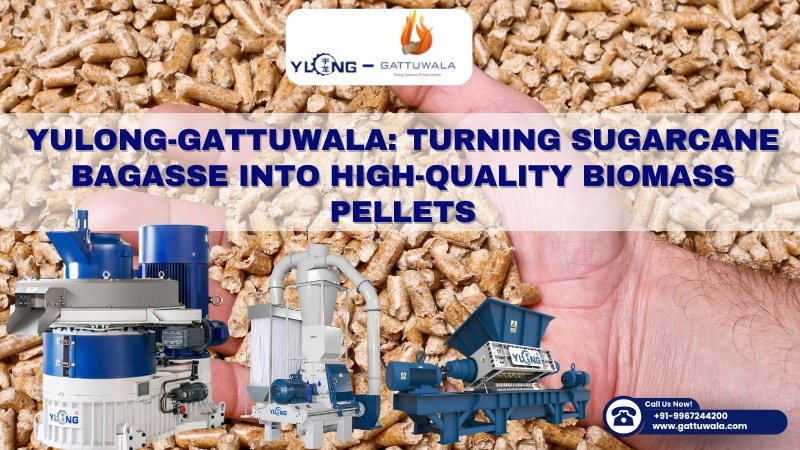- September 1, 2025

As the world moves towards clean energy, biomass pellets are becoming one of the most practical alternatives to coal and other fossil fuels. They are made from agricultural residues, wood waste, or agro by-products such as rice husk, sugarcane bagasse, and wheat straw. But the key question is: How do biomass pellets reduce carbon emissions?
Let’s explore the science, benefits, and climate impact of biomass pellets in detail.
🌍 The Carbon Cycle & Biomass Energy
Unlike fossil fuels, which release carbon that has been trapped underground for millions of years, biomass operates within the natural carbon cycle.
• Plants absorb CO₂ from the atmosphere during photosynthesis.
• When these plants (or their residues) are turned into biomass pellets and burned for energy, they release the same CO₂ back.
• This cycle makes biomass a carbon-neutral energy source, provided it is managed sustainably.
Thus, biomass pellets help avoid adding new carbon into the atmosphere.
🔑 How Biomass Pellets Reduce Carbon Emissions
1. Replacing Coal in Power Plants
Coal is one of the biggest contributors to carbon emissions. Biomass pellets can replace or co-fire with coal in thermal power plants. For example, NTPC in India already uses agro waste pellets to cut down coal usage.
👉 Every tonne of biomass pellets used instead of coal helps reduce nearly 1.5 tonnes of CO₂ emissions.
2. Preventing Stubble Burning
In countries like India, farmers often burn crop residues (stubble), releasing massive amounts of CO₂, methane, and black carbon into the atmosphere. By converting this waste into pellets, the same material becomes clean energy fuel instead of harmful smoke.
3. Cleaner Combustion
Biomass pellets have:
• Lower sulfur content → Less SO₂ and acid rain.
• Low ash content → Reduced particulate matter emissions.
• Uniform size & density → Better combustion efficiency than raw biomass.
This makes them far cleaner than coal or unprocessed agricultural waste.
4. Supporting Renewable Energy Mix
Every unit of electricity produced from biomass pellets displaces a unit that would otherwise come from fossil fuels. This contributes directly to renewable energy targets and carbon reduction goals set by governments worldwide.
🌱 Climate Benefits of Biomass Pellets
• Reduces Greenhouse Gases: Lower carbon footprint compared to fossil fuels.
• Sustainable Waste Management: Converts agro and wood waste into usable energy.
• Energy Security: Reduces dependence on imported coal and oil.
• Supports Rural Economy: Farmers and entrepreneurs benefit by supplying biomass raw materials.
By reducing both direct emissions (from fuel burning) and indirect emissions (from stubble burning and landfill waste), biomass pellets become a double win for the climate.
📊 Global Recognition of Biomass Energy
Countries like Japan, South Korea, and European nations are already importing large amounts of biomass pellets to replace coal in their power plants. India, too, is aggressively pushing biomass co-firing to meet its net-zero 2070 vision.
With companies like Yulong-Gattuwala leading in pellet machine manufacturing and plant setup, India is poised to become a global hub for biomass energy production.
Biomass pellets are not just an alternative fuel — they are a climate solution. By recycling agricultural residues into clean-burning pellets, we can:
• Reduce CO₂ emissions,
• Prevent stubble burning,
• Support farmers, and
• Accelerate the shift to a sustainable, low-carbon future.
As nations strive to fight climate change, biomass pellets stand out as a practical, affordable, and eco-friendly energy option.
👉 Yulong-Gattuwala truly transforms pollution into opportunity, making agriculture cleaner and more profitable.
📞 Interested in setting up a biomass pellet plant in India? Contact Gattuwala Energy for expert consultation, equipment, and government subsidy support.




